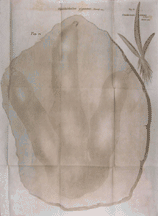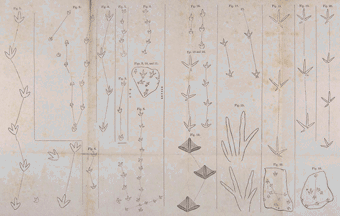Description
of the Footmarks of Birds
on new Red Sandstone in Massachusetts
by
Edward Hitchcock
Amherst College
1835
on new Red Sandstone in Massachusetts
by
Edward Hitchcock
Amherst College
1835
Extracted from:
The American Journal of Science and Arts Vol. XXIX #2, 1836.
Ornithichnology by Edward Hitchcock (Pages 307-340)
Vol. XXIX #2, 1836.
The American Journal of Science and Arts Vol. XXIX #2, 1836.
Ornithichnology by Edward Hitchcock (Pages 307-340)
Vol. XXIX #2, 1836.
 |
This electronic edition prepared by Dr.
David C. Bossard
from original documents in his personal library.
September, 2007.
Copyright © 2007 by David C. Bossard.






